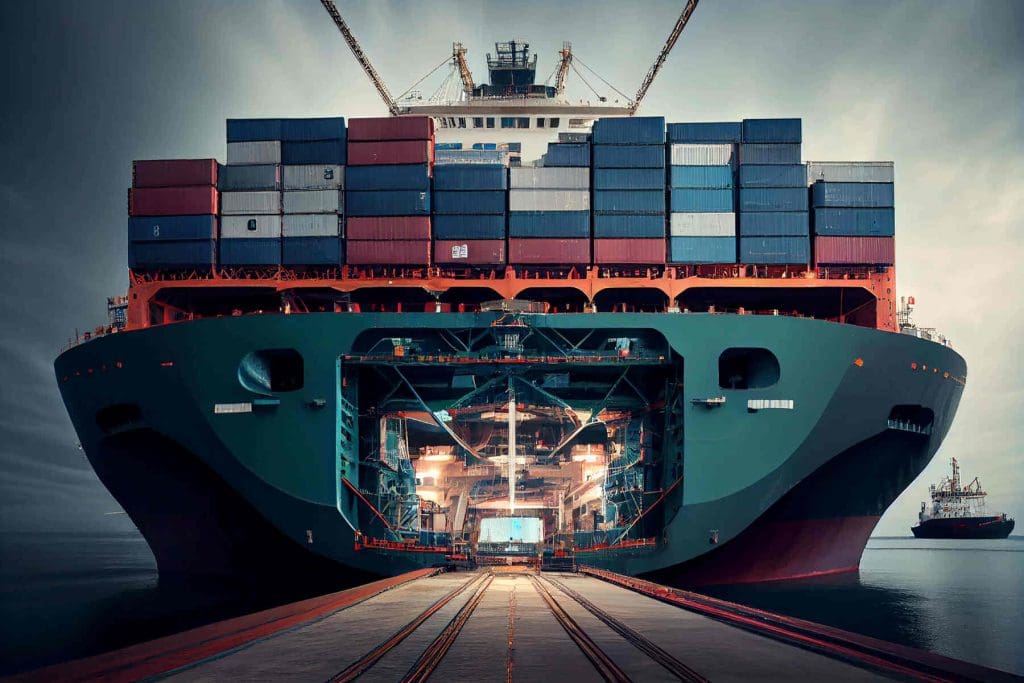In the rapidly evolving landscape of supply chain logistics, businesses in Australia are continuously seeking innovative solutions to enhance efficiency, reduce costs, and improve customer satisfaction. In this pursuit, the role of artificial intelligence (AI) has emerged as a game-changer. With its ability to process vast amounts of data, identify patterns, and make intelligent decisions, AI holds immense potential for transforming Australian supply chain logistics. From streamlining operations to enhancing demand forecasting and optimizing inventory management, AI is reshaping the way businesses operate, unlocking new levels of efficiency, cost savings, and competitiveness.
Enhancing Demand Forecasting
Accurate demand forecasting is crucial for businesses to effectively plan production, procurement, and distribution activities. AI is revolutionizing demand forecasting by analyzing historical data, market trends, and external factors with remarkable precision. Machine learning algorithms enable AI systems to continuously learn and adapt, improving the accuracy of demand predictions over time. By leveraging AI-powered demand forecasting models, businesses in Australia can anticipate demand fluctuations more accurately, resulting in optimized inventory levels, reduced stockouts, and improved customer satisfaction.
Optimizing Inventory Management
Maintaining an optimal balance between supply and demand is a constant challenge in supply chain logistics. AI is proving to be a valuable asset in inventory optimization. By considering factors such as historical sales data, lead times, customer preferences, and market trends, AI algorithms can determine the ideal inventory levels for each product. This ensures that businesses neither suffer from excess inventory nor face stockouts, ultimately leading to cost savings, reduced carrying costs, and improved operational efficiency. AI-powered inventory optimization enables businesses in Australia to respond swiftly to market demands, optimize working capital, and streamline their supply chain operations.
Streamlining Operations
The complexity of supply chain logistics necessitates efficient and streamlined operations. AI brings automation and optimization to various aspects of operations, improving efficiency and reducing human error. For instance, AI algorithms can optimize route planning for transportation, leading to reduced fuel consumption, improved delivery schedules, and lower transportation costs. Additionally, AI-powered systems can enhance warehouse management by optimizing storage space, automating inventory tracking, and improving picking and packing processes. By streamlining operations through AI, businesses in Australia can achieve faster order fulfillment, improved resource utilization, and enhanced overall productivity.
Mitigating Supply Chain Risks
Supply chain disruptions, such as natural disasters, political instability, or unexpected demand fluctuations, pose significant challenges for businesses. AI plays a crucial role in mitigating supply chain risks by providing real-time insights and enabling proactive decision-making. By analyzing data from various sources, including weather patterns, economic indicators, and supplier performance, AI systems can identify potential risks and help businesses develop contingency plans. Furthermore, AI-powered predictive analytics can enable businesses to anticipate disruptions and take preemptive actions, minimizing the impact on their supply chain operations.
The Future of Australian Supply Chain Logistics: Exploring Emerging AI Trends and Innovations
The Australian supply chain logistics industry is on the cusp of a technological revolution, with artificial intelligence (AI) poised to reshape the landscape in the coming years. As businesses strive to stay competitive and meet evolving customer demands, AI presents a plethora of opportunities for optimizing operations, improving efficiency, and driving innovation. This article delves into the future of Australian supply chain logistics, highlighting emerging AI trends and innovations that are set to revolutionize the industry.
– Predictive Analytics and Prescriptive Insights – AI-powered predictive analytics is set to play a pivotal role in supply chain logistics. By leveraging historical data, market trends, and external factors, predictive analytics algorithms can forecast demand patterns, identify potential bottlenecks, and optimize inventory levels. The next frontier lies in prescriptive analytics, where AI algorithms provide actionable insights and recommendations, enabling businesses to make informed decisions and proactively address supply chain challenges. Through predictive and prescriptive insights, Australian supply chain logistics can achieve greater accuracy, agility, and responsiveness.
– Autonomous Vehicles and Drone Delivery – The integration of AI in autonomous vehicles holds significant promise for Australian supply chain logistics. Self-driving trucks equipped with AI technology can optimize route planning, reduce fuel consumption, and enhance delivery efficiency. Moreover, drones equipped with AI algorithms can revolutionize last-mile delivery, enabling swift and cost-effective shipments to remote areas or congested urban centers. With the potential to minimize human errors, improve safety, and expedite deliveries, autonomous vehicles and drone delivery systems powered by AI are set to transform the logistics landscape in Australia.
– Robotics and Automation – AI-powered robotics and automation are making significant strides in supply chain logistics. Robotic process automation (RPA) can streamline repetitive tasks, such as order processing and inventory management, freeing up human resources for more complex and strategic activities. Collaborative robots, or cobots, equipped with AI capabilities, can work alongside human operators, enhancing efficiency and productivity in warehouses and distribution centers. As the technology advances, robots equipped with AI algorithms will become more adept at handling intricate tasks, leading to increased accuracy, speed, and cost savings in Australian supply chain logistics.
– Blockchain for Enhanced Transparency and Security – The adoption of blockchain technology holds great potential for transforming supply chain logistics in Australia. By leveraging AI algorithms and distributed ledger technology, blockchain enables enhanced transparency, traceability, and security throughout the supply chain. AI-powered smart contracts can automate and enforce contractual agreements, ensuring compliance and reducing disputes. Additionally, the integration of AI and blockchain can enable real-time tracking of goods, verification of product authenticity, and efficient management of supplier relationships. The combination of AI and blockchain has the potential to revolutionize supply chain logistics by enhancing trust, reducing fraud, and improving collaboration among stakeholders.
– Augmented Reality for Enhanced Operations – Augmented reality (AR) is set to augment operations in Australian supply chain logistics. By overlaying digital information onto the physical environment, AR can provide real-time data visualization, instructions, and remote assistance to warehouse personnel. AI algorithms can analyze visual data from AR devices, enabling the recognition of objects, quality control, and inventory management. With AR-enabled devices and AI integration, businesses can enhance accuracy, reduce errors, and improve operational efficiency in tasks such as picking, packing, and sorting.
The future of Australian supply chain logistics is intrinsically tied to the transformative power of artificial intelligence. As businesses embrace emerging AI trends and innovations, they can unlock new levels of efficiency, cost savings, and customer satisfaction.
Conclusion
Artificial intelligence is reshaping Australian supply chain logistics, revolutionizing the way businesses operate and unlocking new opportunities for optimization and growth. By leveraging AI for demand forecasting, inventory management, operations streamlining, and risk mitigation, businesses can achieve improved operational efficiency, reduced costs, and enhanced customer satisfaction. Embracing AI technologies requires investment in data infrastructure, talent development, and collaboration between supply chain experts and data scientists. However, the potential benefits of AI in optimizing supply chain logistics in Australia outweigh the challenges. As businesses continue to embrace the power of AI, they are poised to gain a competitive edge in the dynamic and ever-changing world of supply chain management.

